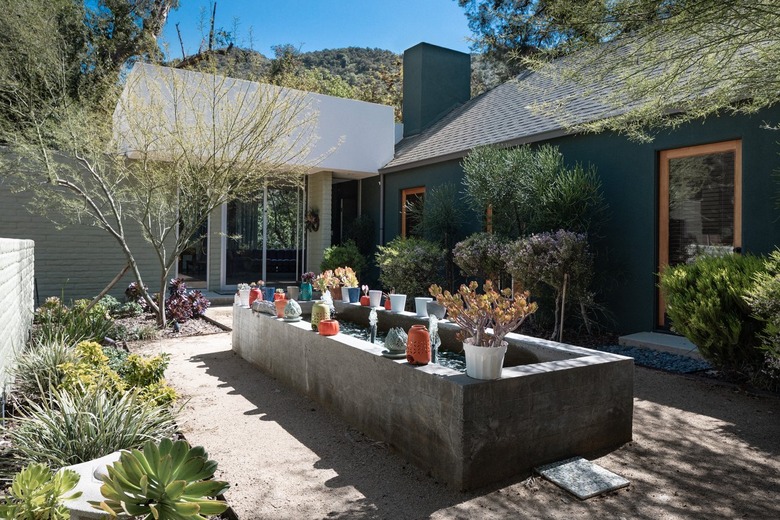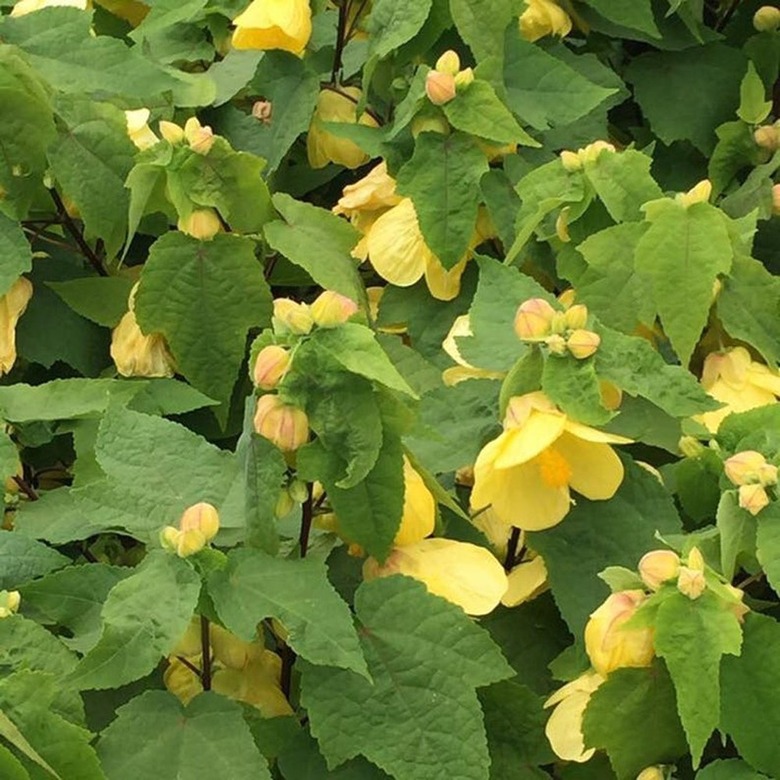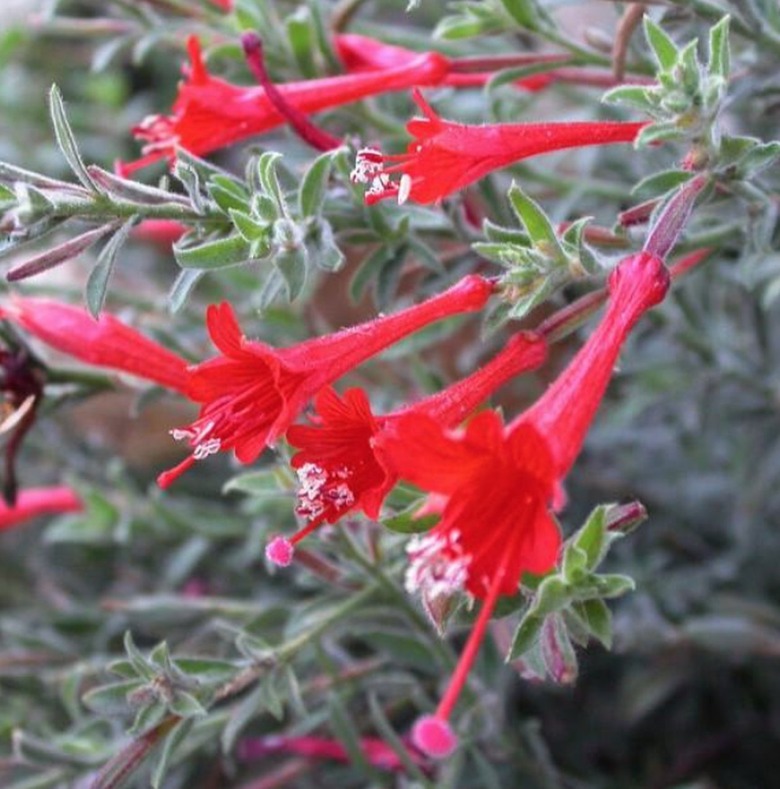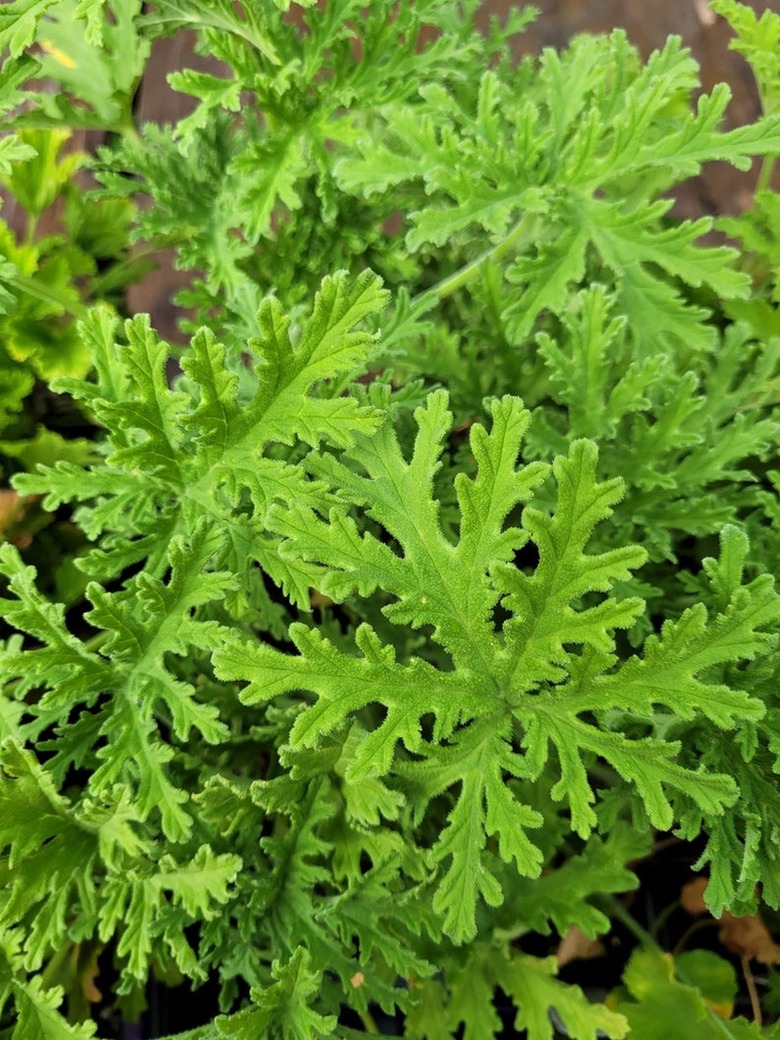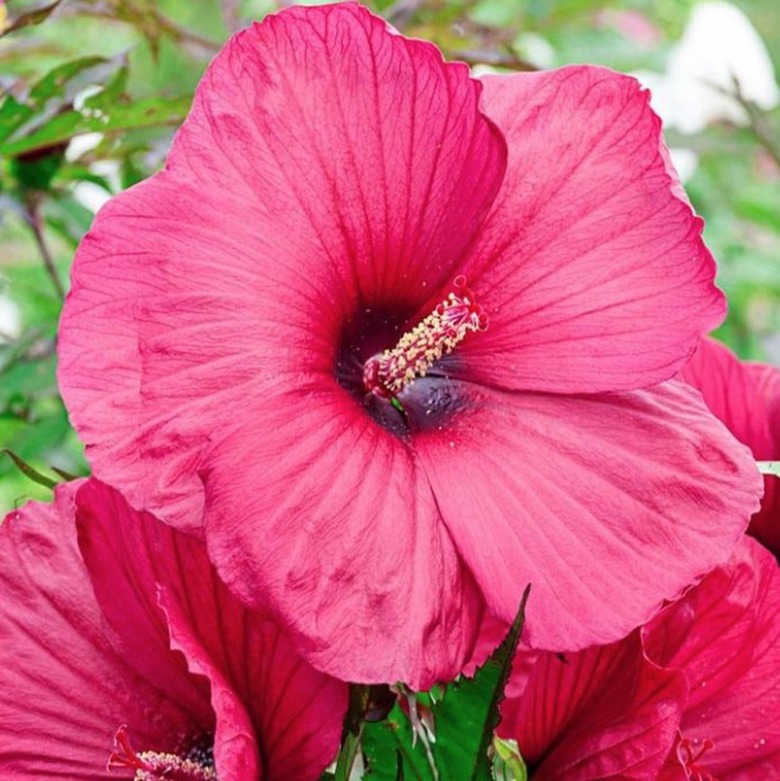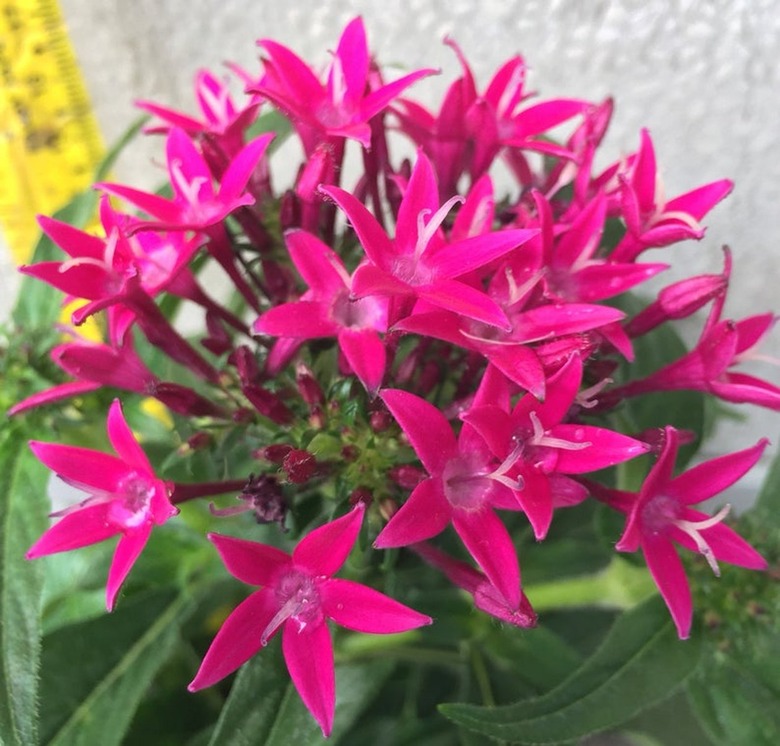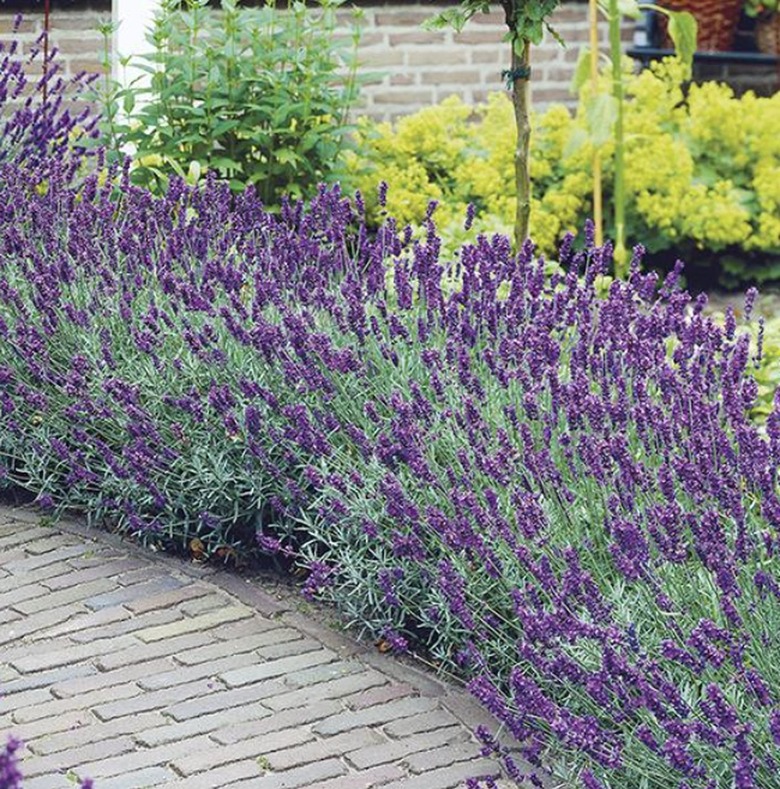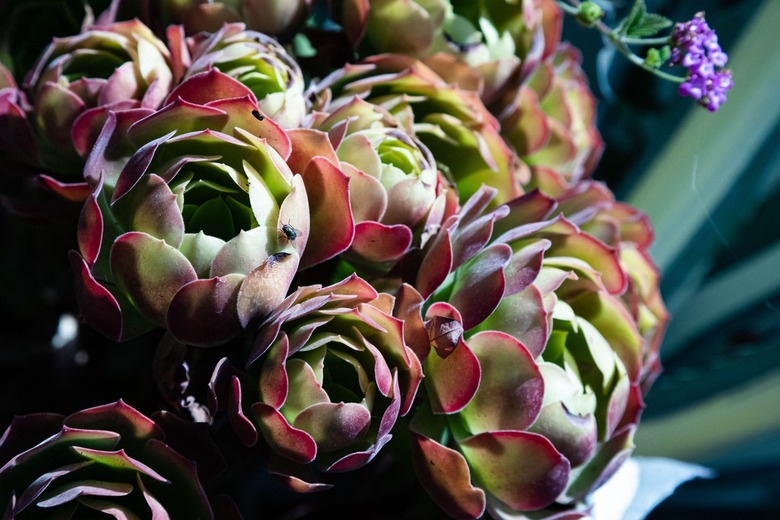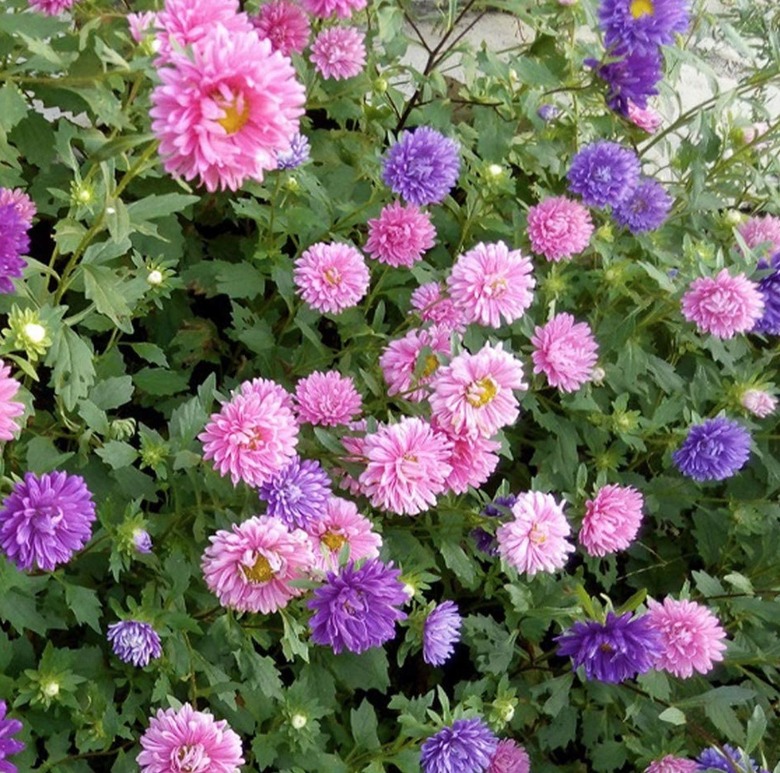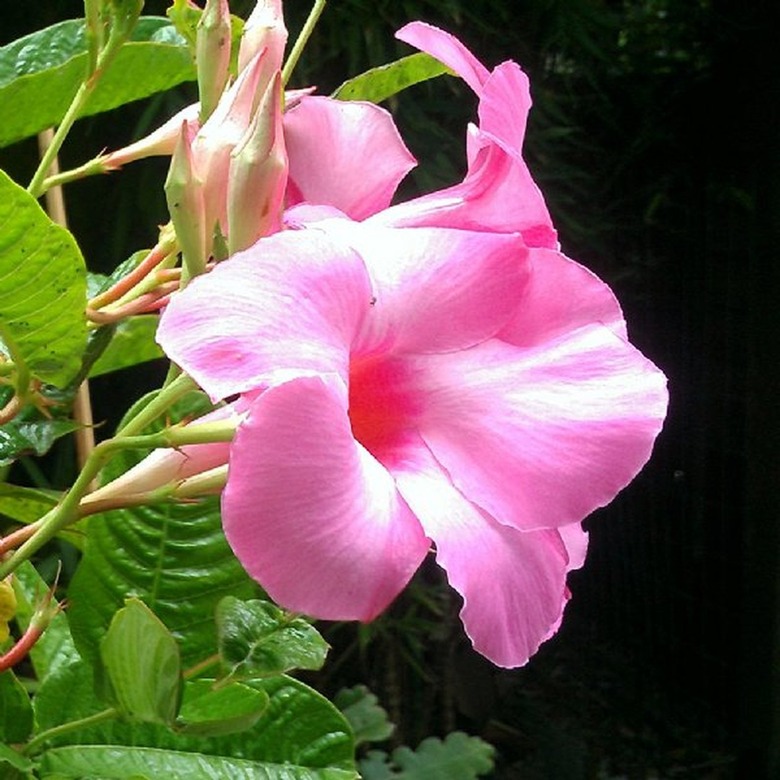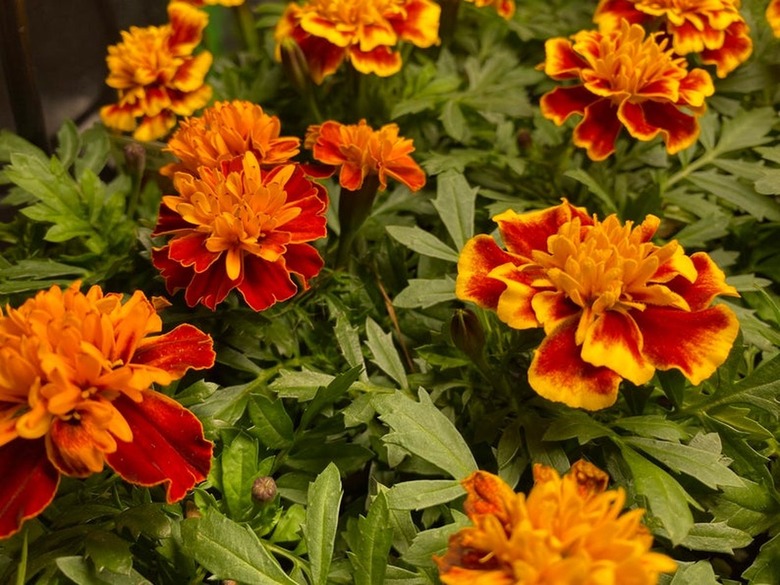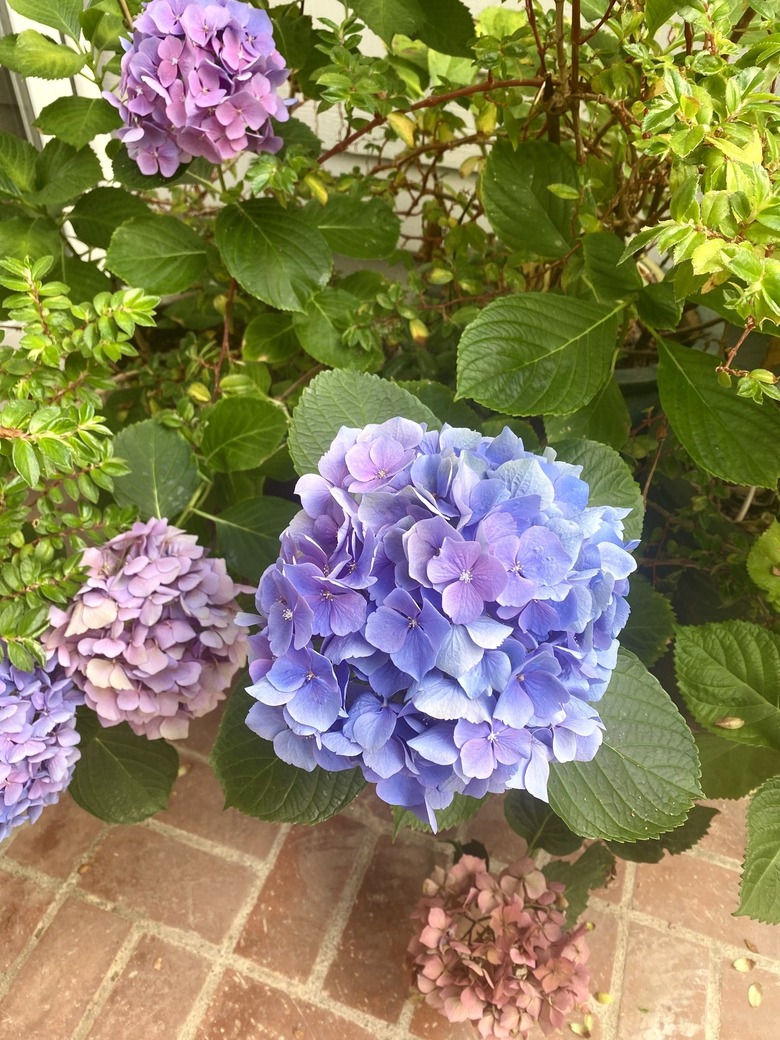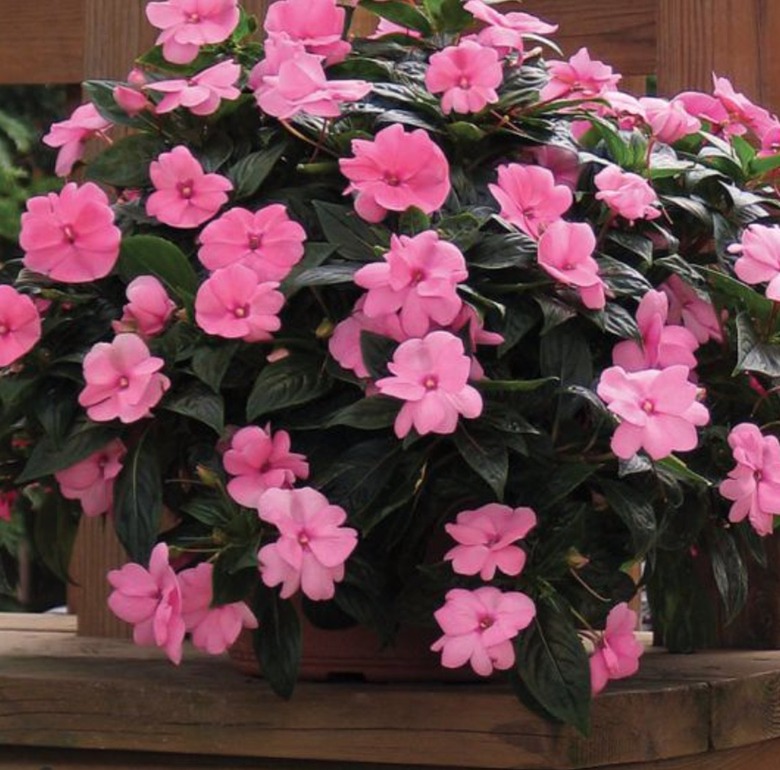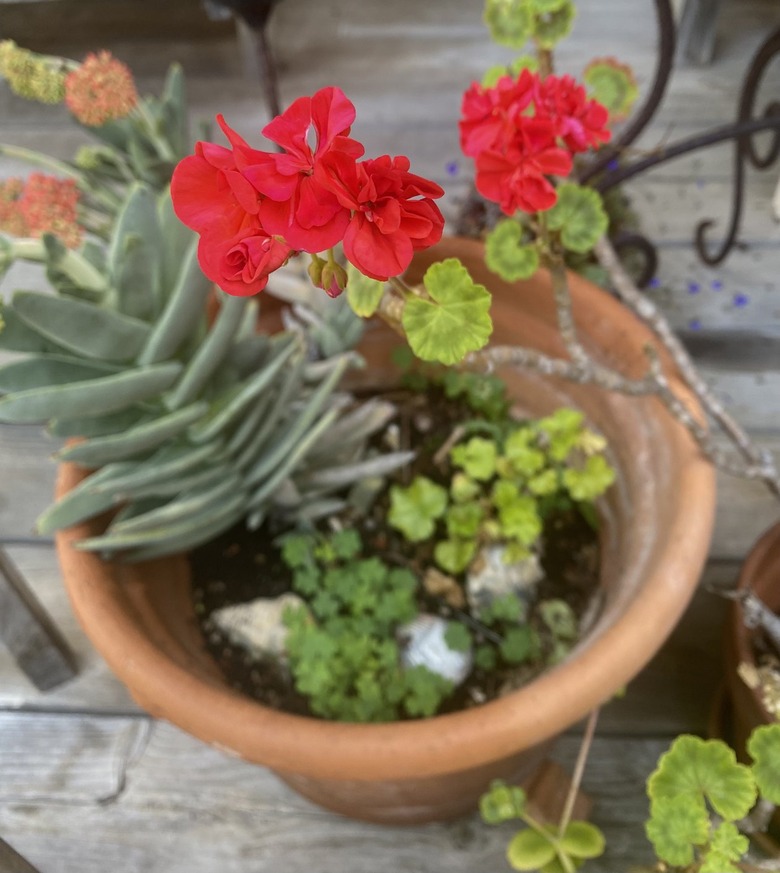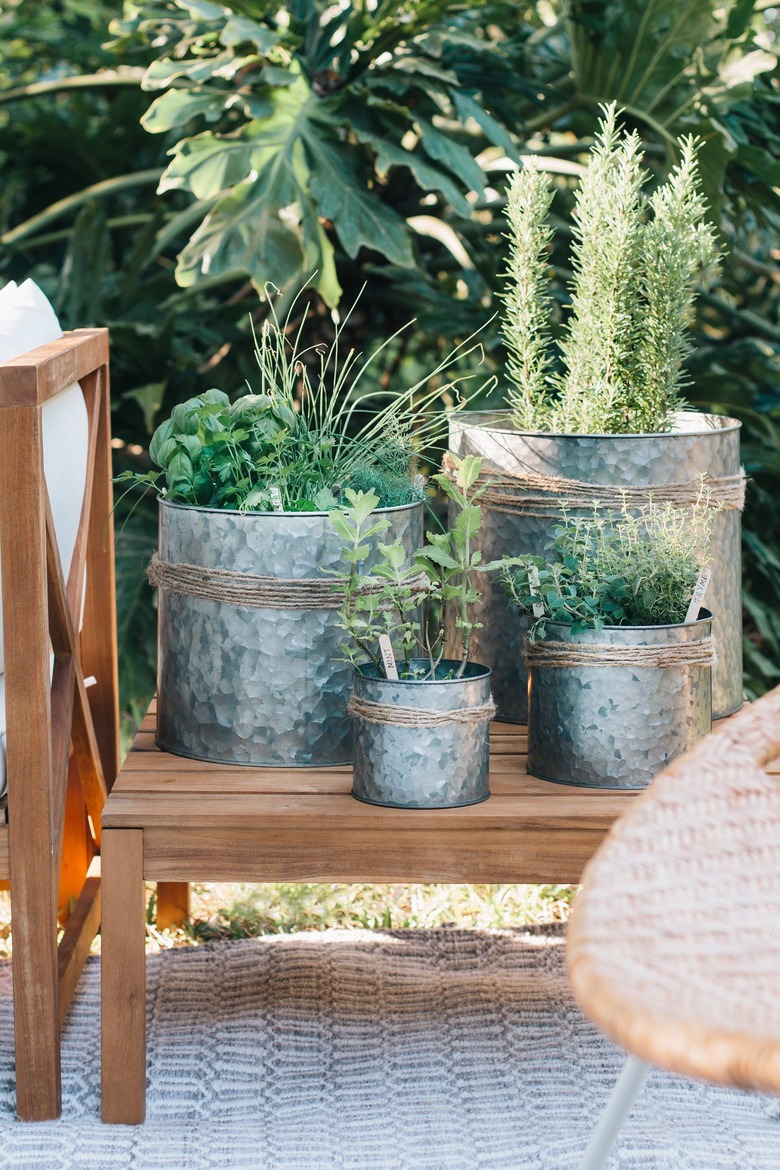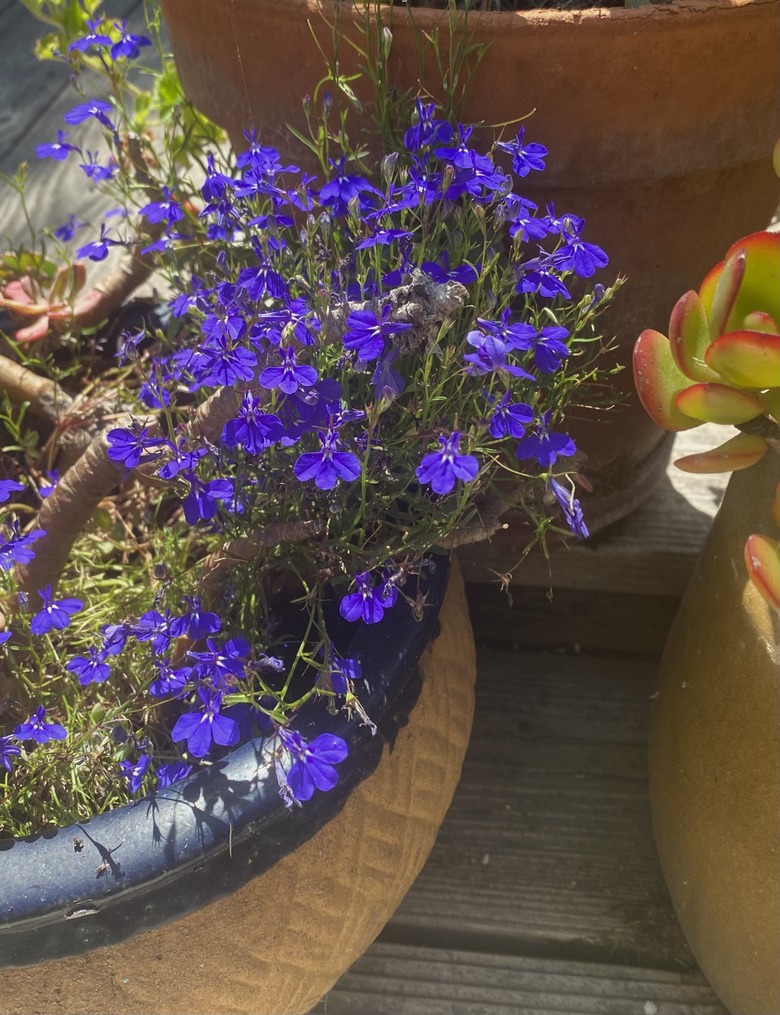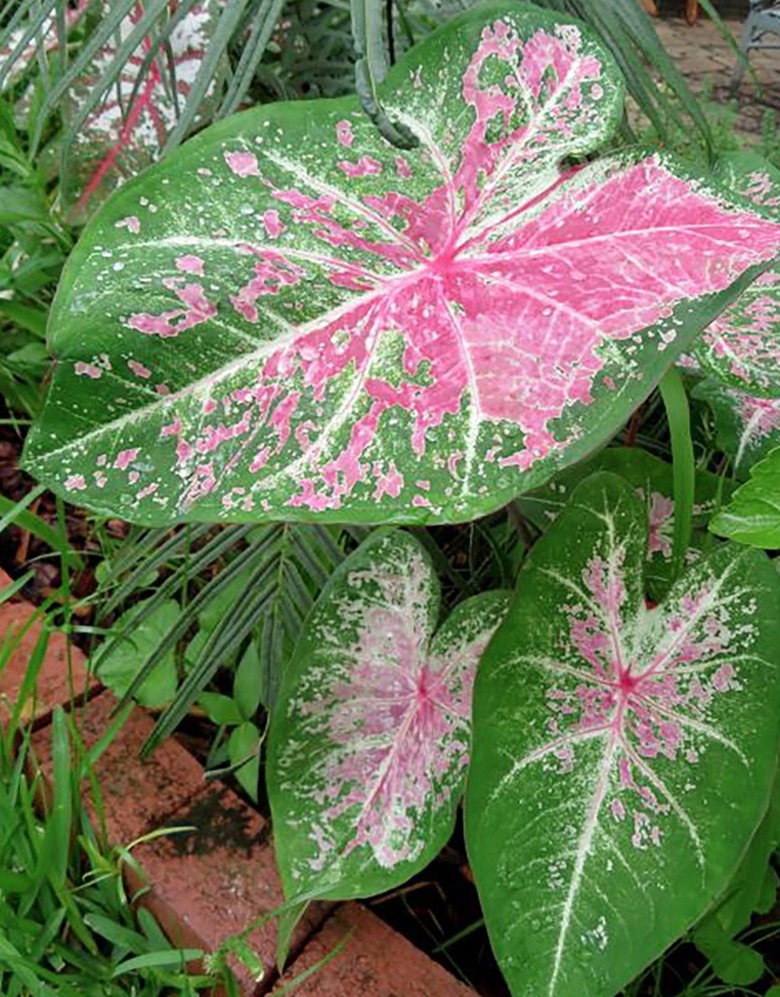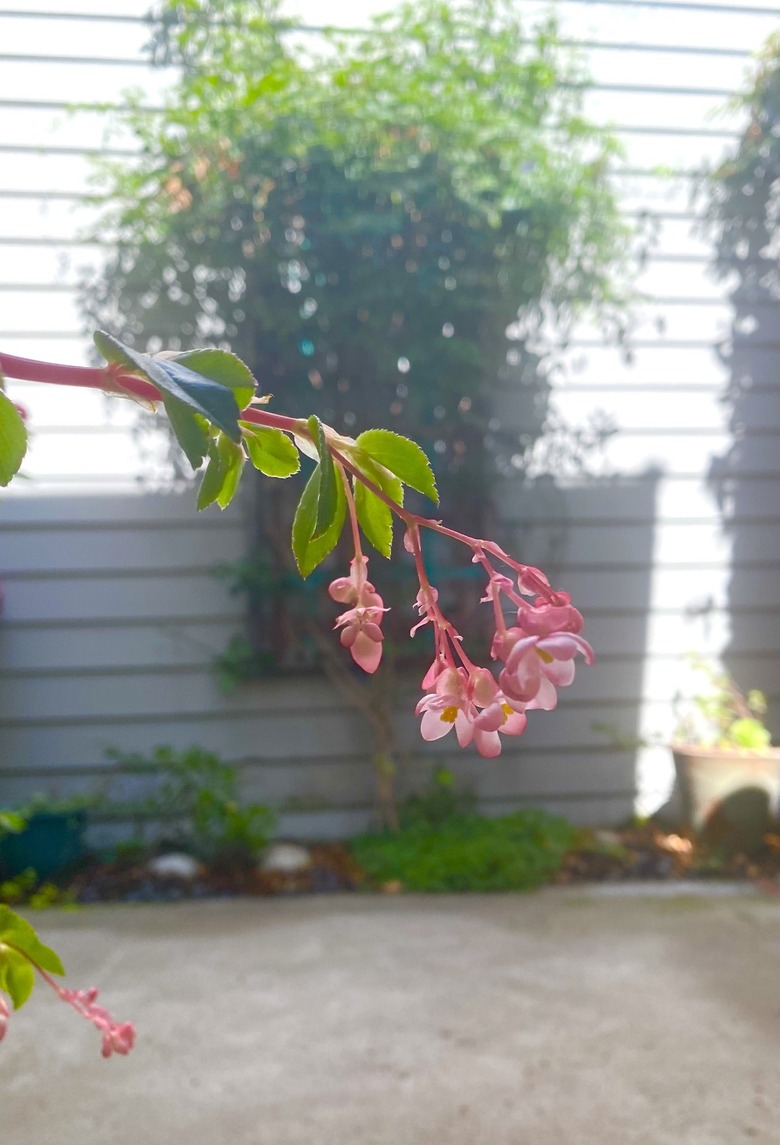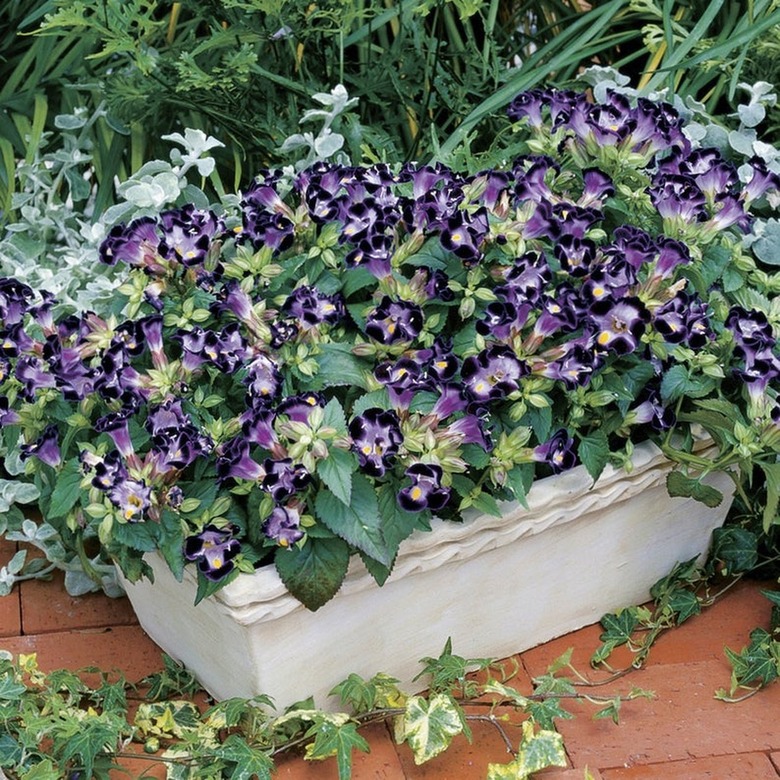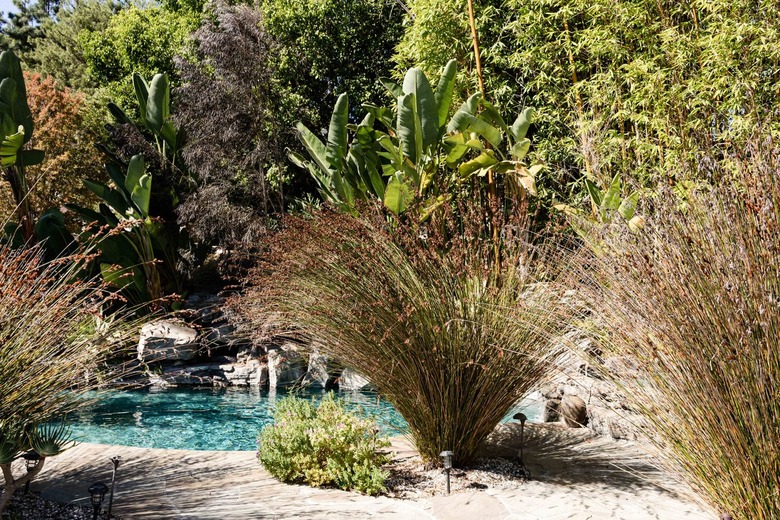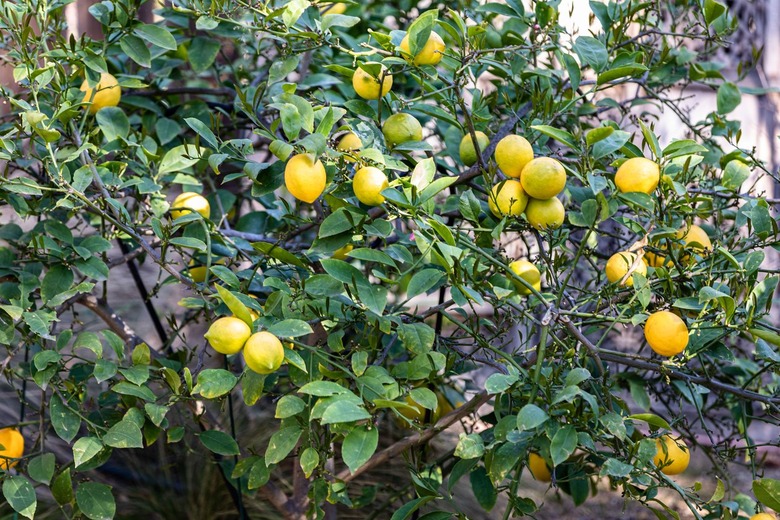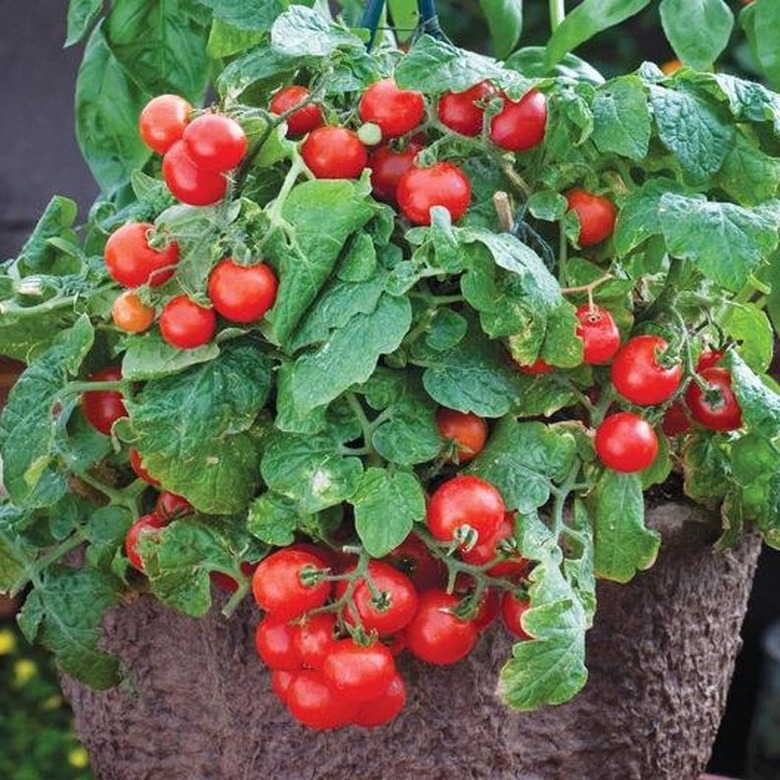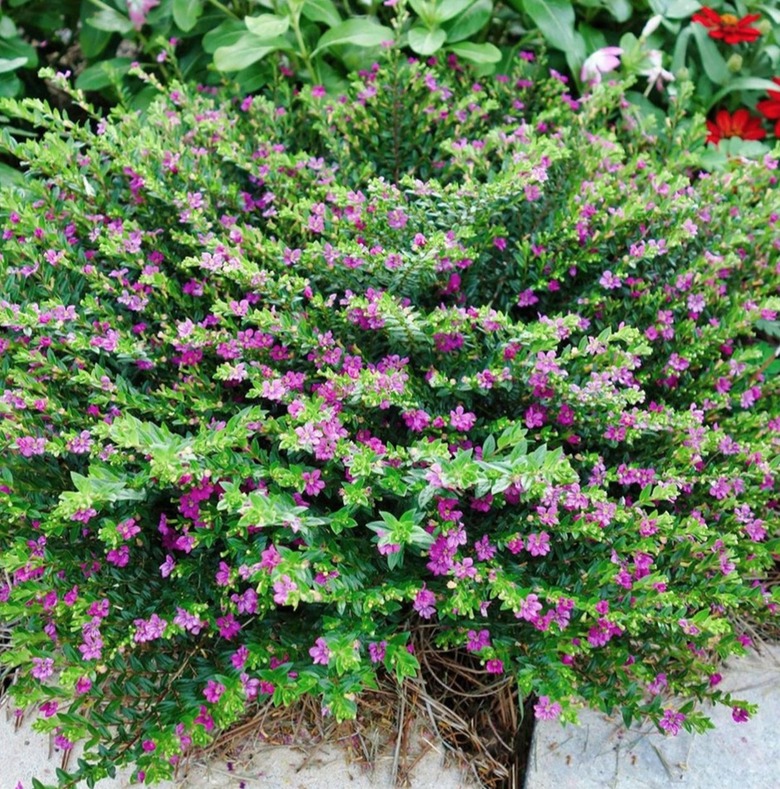25 Patio Plants For A Lush Green Space
We may receive a commission on purchases made from links.
Think of your outdoor patio as the pleasant area between home and backyard — a space where nature and comfort live together in harmony and where you can spend time with friends or enjoy the surroundings solo. This area simply isn't complete without plants, but you aren't likely to want a jungle of wild landscaping. The overflowing garden beds, evergreen hedges, and water elements are typically best in expansive outdoor spaces, while ideal patio plants are low-maintenance ornamentals that don't forget they are living in a shared space.
Ready to load up on bright colors and greenery? Here are 25 of the best plants to consider for your patio.
1. Flowering Maple
1. Flowering Maple
Maple trees don't do well in warmer growing zones, but the beautiful shrub called flowering maple is a patio favorite with many homeowners. This little shrub makes an excellent container plant, offering a profusion of lush greenery shaped like enormous maple leaves (up to 8 inches wide). Its slender branches fill with 3-inch papery blossoms all summer long, with new flowers appearing almost continually during the growing season. The flowers will make you think of hibiscus blooms; they hang like bright lanterns in shades of yellow, orange, and red. Buy here.
Growing Notes:
- Requires fertile, well-drained soil
- Grows best with some morning sun and some shade
- Produces fewer flowers if you overfeed
- Grows quickly to 3 feet
2. Lantana
2. Lantana
For hanging baskets or on a sunny patio's border, you can't beat lantana plants — broadleaf evergreens that act like vines and smell like citrus. The vibrant flower clusters spill gracefully over the sides of patio containers, blooming continuously in warm weather. Lantanas are sun-worshipping plants and prefer a location that receives direct rays instead of full shade. Keep them outside in the winter, and they will continue to attract butterflies with those blossoms in mixes of red, orange, and yellow. Buy here.
Growing Notes:
- Grows well in any type of well-draining soil
- Drought-resistant in large containers but prefer regular irrigation
- No fertilizer required
- Cannot survive in temperatures below 28 degrees Fahrenheit
3. Fuchsia
3. Fuchsia
With dancing blossoms in jewel tones, healthy fuchsias will light up your patio from spring through the first frosts. These plants are hardy, and the hanging flower clusters are truly gorgeous, mixing shades of royal purple, vibrant pink, luscious peach, and snowy highlights. They catch every eye and bring hummingbirds and butterflies to your patio as well. Protect these beauties from the afternoon sun, but otherwise, they aren't demanding, blooming happily in containers all summer long. Buy here.
Growing Notes:
- No deadheading required
- Choose between the trailing and upright/bushy varieties
- Provide moist, well-drained organic soils
- Water when the soil surface feels dry
- Fertilize monthly during the growing season
4. Pelargonium
4. Pelargonium
For splashes of color on full-sun patios, consider pelargonium, a tropical cousin of geranium, known to some as zonal geranium. Pelargoniums are great patio plants because they grow well in containers, offer lovely, scented foliage, and produce clusters of flowers in bright reds or softer shades of salmon, lavender, and baby pink. The leaves smell minty and are often "painted" in bronze or maroon. Buy here.
Growing Notes:
- Situate in full sun for the best blossoms
- Provide moist, well-drained soil
- Water regularly, allowing the top of the soil to dry
- Fertilize monthly
- Deadhead regularly, removing spent stems and flowers
5. Rose of Sharon Hibiscus
5. Rose of Sharon Hibiscus
If you live in a cooler climate and want patio plants to last through the winter outside, rose of Sharon hibiscus is an excellent choice. Hardy to U.S.D.A. zone 5, this selection produces hollyhock-like blossoms, single or double, in a wide range of colors. The plants form tall, multi-stemmed shrubs, but with a little pruning, you can create a single-stemmed plant. Rose of Sharon flower on new wood, so prune early in the season to allow the hibiscus to regrow new branches. Want blossoms as big as a dinner plate? Opt for hibiscus moscheutos instead. Buy here.
Growing Notes:
- Full sun produces the most flowers
- It prefers moist, well-draining soil
- Organic mulch keeps moisture in the soil
- Fertilize in spring with a side dish of compost
- Prune back hibiscus to refresh
6. Penta
6. Penta
For truly whimsical decor, consider bringing penta plants to your patio. These warm-region perennials offer sparkling star-shaped blossoms from spring through fall in vivid shades of red, purple, and pink, as well as white. Since the penta is one of the best pollinator-attractive plants available, expect bees, butterflies, and hummingbirds flocking to your patio as well. Penta comes in handy in hot-summer regions since it blooms well even during the hottest weather conditions. Buy here.
Growing Notes:
- The more sun, the better
- Grows to 36 inches tall
- Loves container life
- It's deer resistant
- Compact growth habit
- It needs water during hot weather
7. Lavender
7. Lavender
For the gorgeous scent alone, adding lavender to your patio space is not only good for the eyes, but it's also great for the soul. The Mediterranean native works in many climates. It tends to be bushier in hotter areas but is still a beautiful lower-growing perennial when it's cooler. Once the root is established, the plants need little watering and are considered drought-resistant. They like lots of sunlight and bloom in the summer. The flower stalks can be harvested, used fresh, or dried for year-round aromatherapy. And trust us, there's nothing like the scent of fresh lavender to bring some serenity to your surroundings. Buy here.
Growing Notes:
- The more sun, the better
- Grows in most climates
- It's drought resistant
- It's deer resistant
- Can self sow
8. Succulents
8. Succulents
If you're looking for lower-maintenance plants to turn your patio into a lush oasis, then a collection of succulents might be right for you. Some of the most common varieties are agave, aloe, and echeveria. They offer a very wide array of colors and textures and can be grown either indoors or out. They thrive in just about any container. We've seen succulent walls done beautifully. And because of all the choices and their hardiness, you can really play with where and how they're planted on and around your patio. Typically, they enjoy a half-day of sun or more. They store water inside their leaves, so you don't have to feed them too frequently. Once every couple of weeks should suffice, depending on the temperature. Since they're somewhat slow-growing plants, many succulents require little pruning as well. These hardy growers are also considered air purifiers, especially if you are growing them indoors. You can also combine them with cacti for dramatic visual results. Buy Here.
Growing Notes:
- The more sun, the better
- Water every other week
- They're deer and rabbit resistant
- Grow indoors or out
- Little or no pruning is required
9. Chrysanthemums
9. Chrysanthemums
Chrysanthemums or "mums" are often associated with autumn as they appear in nurseries and florists in September or October. But if you are growing mums on your own patio in pots, they are hearty perennials best planted in early spring. They're also related to dahlias, sunflowers, marigolds, zinnias, and cosmos. You can find everything from the small cushion variety to giant spider mums which all bloom in almost every color of the rainbow with lovely blue-green leaves. The way we see it, mums are a definite win-win for the patio. Buy Here.
Growing Notes:
- Plant mums 18 to 36 inches apart, depending on the size of the greenery
- Mums should be fertilized monthly using a balanced fertilizer
- Maintain good air circulation around plants
- Add mulch around the mum to conserve soil moisture and keep weeds out
- Soak the soil deeply when watering, but avoid getting water on the leaves
- Add four to six inches of mulch around the plant after the ground has frozen
- Don't cut back mums in the fall. Dead growth insulates the roots. Cut off the dead stems and leaves at the first green shoots in the spring
- Mums are susceptible to mites, aphids, and mildew
10. Mandevilla
10. Mandevilla
The mandevilla is a popular plant for patios because of its colorful tropical-looking flowers. They can be potted or planted in the ground, and if cared for correctly, will grow into gorgeous vines or shrubs. If it's a vine you want, add a trellis or a means for support for the plant. However, it's important to note that the mandevilla is a very frost-tender perennial, so if you live in a climate where temperatures drop below 50 degrees Fahrenheit, you'll want to bring your plant indoors to avoid causing its demise. Be sure to check the plant closely for pests before doing so and consider cutting it back up to about one-third of its size. Come spring and summer, you'll have a stunning vine filled with blooms to enjoy during warmer months on your patio after a winter's rest indoors. Buy Here.
Growing Notes:
- It needs sandy, well-drained soil
- Full sunlight is needed for blooms
- Fertilize every two weeks when in bloom
- Pinching the plant keeps it fuller
- Bring inside when temps reach 50 degrees Fahrenheit or lower
- Remove dead leaves before returning the plant outside for summer
11. Marigolds
For a plant that instantly makes you smile and is easy to grow, there's nothing better than the marigold. They're affordable. They're dependable. They'll bloom brightly all summer long. There are close to 50 species of these cuties so you can definitely make this fast-growing flower work with your personal patio style. Some are more drought tolerant than others, so do some research and pick a varietal that is compatible with your climate. They even make excellent companion plants that can protect the roots of your garden vegetables from worms and other pests. Just be sure to plant them nearby, not right next to your veggies. Buy Here.
Growing Notes:
- Once established, pinch off blooms to encourage growth
- Allow soil to dry between waterings
- Water at the base of plants, not over blooms
- Don't fertilize during growth
- When plants are young, use mulch to keep them moist
12. Roses
12. Roses
When it comes to roses, choosing from the almost endless types can be overwhelming. It's a bit of a research project but well worth it. For a patio, you may decide to go with potted roses, which offer ease of maintenance and a bit more protection from those pesky pests. Be sure not to crowd your potted roses together, though. And be prepared for a lot of work, as they require year-round care in order to get gorgeous, fragrant blooms. Roses are magical for many reasons, but here are some fun facts: They are edible; rosewater is great for the skin; they symbolize love in many forms and were even used as a form of currency in ancient civilizations. Buy Here.
Growing Notes:
- If you have bare-rooted plants, soak them in a bucket of cold water eight to 12 hours before planting
- Loosen roots before planting in a container
- Water liberally after potting
- Mound up loose soil around canes to protect them
- Deadhead them as often as daily when in bloom
- Mulch them and use banana peels to feed them
13. Hydrangeas
13. Hydrangeas
Blooming in spring and summer, hydrangeas are one of the special shrubs with stunning flowers that often leave us in awe. In the ground, they can grow to 15 feet with blooms that come out in late spring and last into fall. They look high maintenance but grow abundantly with the right conditions and care. What's super awesome about these beauties is you can actually control the color of the flowers in some varieties by adjusting the PH level of the soil. How cool is that? A low soil PH keeps flowers blue; a higher PH results in pink and red ones. Buy Here.
Growing Notes:
- Look for pots in non-porous materials to keep the soil moist
- Water in the mornings
- Keep out of the heat or direct sunlight
- They grow well in soil with an abundance of organic material
- They need good drainage to avoid rotting
14. Impatiens
14. Impatiens
These cheery annuals can brighten up a dark or shady patio instantly. Keep the plants you picked up from the nursery well-soaked before potting, as they can wilt easily if not watered regularly. They're perfect for containers or patio borders, as long as the sunlight isn't blazing on them all day. It's best to plant pretty impatiens after the last frost in colder climates. Try mixing up multiple colors for a more dramatic effect and just sit back and enjoy. Buy Here.
Growing Notes:
- They're best if fertilized regularly
- They need two to four inches of water per week
- No need to deadhead, they self-clean
- They're best in shady areas
15. Geraniums
15. Geraniums
These pretty plants are usually referred to as geraniums and are excellent in hanging pots or window boxes as well as flower beds. We love them because of all the bright and cheery colors they come in — even neon. There are a ton of varieties that are better in certain pots or containers, so be sure to explore what's out there. Geraniums also look particularly great with cottage or coastal decor. There's something cozy about these lovely plants that just make a patio feel welcoming. And they're pretty easy to take care of as long as you give them a little love and attention. Buy Here.
Growing Notes:
- They love equal parts soil, peat, and perlite
- Space plants eight to 12 inches apart when you first plant them
- Make sure they're placed in a spot with six to hours of sunlight daily
- Mulching helps keep in the moisture
16. Herbs
16. Herbs
Why not plant yourself a pretty herb garden in some captivating containers to turn up the wow factor on your patio? Get the necessities like rosemary, thyme, mint, and basil. It's fairly simple to maintain a herb container garden and keep it looking lovely, but you have to take care when grouping the plants. Keep fennel and wormwood isolated from other plants. Rue should be kept away from sage and basil. Sticking to the basic herbs is easier and will still provide lots of lush greens and savory fragrances for your patio. Plus, your recipes will be next-level delicious. Buy Here.
Growing Notes:
- Most herbs love full sun, so no planting in the shade
- Make sure there is ample drainage
- Keep them well watered
- Herbs like a warm climate, so if you have cold winters you will have to move the greenery inside
17. Lobelia
17. Lobelia
Lovely lobelia is an annual herb with many varieties. It's an easy-to-grow, somewhat carefree plant that enjoys cooler weather. Annual lobelia will flourish just about anywhere. It's a great addition to hanging pots or containers and will continue to bloom right up to the first frost. Lobelia seeds can be sown directly in the garden or indoors for later transplanting. Buy Here.
Growing Notes:
- Seeds can be sown directly in the soil outside or inside for later transplanting
- Full sun is best, but lobelia plants can tolerate some shade
- Moist soil is best
- Fertilize monthly
18. Caladium
18. Caladium
Because of the multiple colors and shapes, caladium tends to look fascinating. Some varieties have leaves bigger than the palm of a hand. Others feature gorgeous shades of pink and purple. Caladium works best on shady or somewhat shady patios and tend to prefer humidity. But with a little pampering, you can make them work in more temperate climates too. Buy Here.
Growing Notes:
- It prefers warm soil and hot weather
- Moist soil is best
- Wait to plant until two or three weeks after the last frost
- Check your planting zones and varietals before picking a plant for outdoors
19. Begonia
19. Begonia
Typically used in shaded summer beds or in hanging planters, begonias have tropical and subtropical origins. They have lovely blooms in white, pink, and ruby shades and come out in early summer right up to the first frost. It's important to note most of the varieties are toxic to pets, so keep this in mind if you have furry friends at home. Buy Here.
Growing Notes:
- It's deer resistant
- Moisture-rich soil is best
- Regular watering is key
- It's susceptible to powdery mildew, mealy bugs, moths, and whiteflies
20. Torenia
20. Torenia
Torenia, or the wishbone flower plant, is a short, ground-hugging beauty that looks great in patio pots. The long-lasting and attention-grabbing blooms are tough and able to survive hot summer weather. Blooms begin in late spring and stick around all summer, so they're perfect to enjoy during the warmer months. Torenia plants can even be grown indoors. Imagine combining these with some lobelia for the pretty pops of color your patio needs. Buy Here.
Growing Notes:
- Moisture-rich soil is best if you're planting directly in the ground
- Avoid direct sunlight if possible
21. Ornamental Grass
21. Ornamental Grass
When you want a patio space filled with tropical plants but live in an area where rainfall is scarce, planting an array of ornamental grass is a fantastic solution. These minimalist plants add a super chic look and don't require much in return. Depending on the needs of your patio, there's sure to be a varietal for you. Some can provide ample privacy as well. If you're going with containers, pick a type that doesn't grow too big or overwhelms your space. Buy Here.
Growing Notes:
- Full sun or partial shade is typically fine
- Water often when the grass first takes root
- Not all types of ornamental grass are drought tolerant
- It can be divided up and replanted once the root takes
22. Meyer Lemon
22. Meyer Lemon
The Meyer lemon is the most popular citrus tree to grow in containers. With the proper pot and a warm sunny patio, you can grow this fruit year round. It's better to begin with a dwarf tree, though, because healthy citrus plants will eventually outgrow their containers. Buy Here.
Growing Notes:
- Eight hours of sun and a wind-free spot is ideal
- They're sensitive to frost so must be moved inside during the winter
- Dwarf rootstock varieties grow better in pots
- Use a 28-inch or larger pot, and don't crowd the roots
- Keep pot standing off the ground instead of sitting in a tray of water to avoid attracting mosquitoes
- Lightweight soil that drains well is best
23. Ferns
23. Ferns
For a whimsical patio vibe, why not create a fern garden? These plants are great for a shady area where sunlight is limited. There are many varieties that can even withstand the winter months, but double check the climate before you start potting. In addition to being whimsical, ferns are extremely forgiving and have a strong survival instinct, which makes them a great choice for a beginner. All they really need is regular mulching and watering. And in return, you'll get graceful green textures all year long. Buy Here.
Growing Notes:
- They're pest-resistant except for slugs
- They need regular mulching
- The soil must be kept moist
- Filtered or indirect sunlight is best
24. Cherry Tomatoes
24. Cherry Tomatoes
While you may not have the space or desire to plant an entire vegetable garden, cherry tomatoes are not only easy to grow, but they are also a colorful and pretty addition to any patio. It's best to plant them in pots where they'll receive at least six hours of sunlight daily. They'll also need a steady water supply, so placing them near a hose is ideal. Grouping pots together helps shade the root zones, but make sure you don't place them too close together so that leaves can touch so as to prevent disease. Whether you want tomatoes for snacking, sandwiches, or your favorite pasta sauce, there are loads of varieties to choose from. Buy here.
Growing Notes:
- The ideal starter pot should have an 18-inch diameter minimum
- Use premium potting soil
- Cover two-thirds of the tomato stem when planting in soil
- Plant after the last frost date, and cover plants with burlap during cold nights
- Include support when you first plant
- Keep the soil one inch below the rim of the pot, and add a layer of mulch
- Keep plants moist
- Feed regularly
25. Cuphea
25. Cuphea
Often referred to as cigar plants, the cuphea comes from a genus containing close to 260 flowering perennials that are native to warm and tropical regions of the Americas. There are varietals that range from low-growing herbaceous plants to woodier shrubs. And their heaviest bloom is during the summer. The flowers range in size and color, so there are lots of options to choose from depending on what you need for a patio border or for large pots. Ideally, cuphea loves heat but partial sun is best. Buy here.
Growing Notes:
- It prefers partial sun
- It can grow to two feet tall
- It thrives in containers or in the ground
- The foliage is evergreen
- It blooms summer and fall
- It needs regular watering
